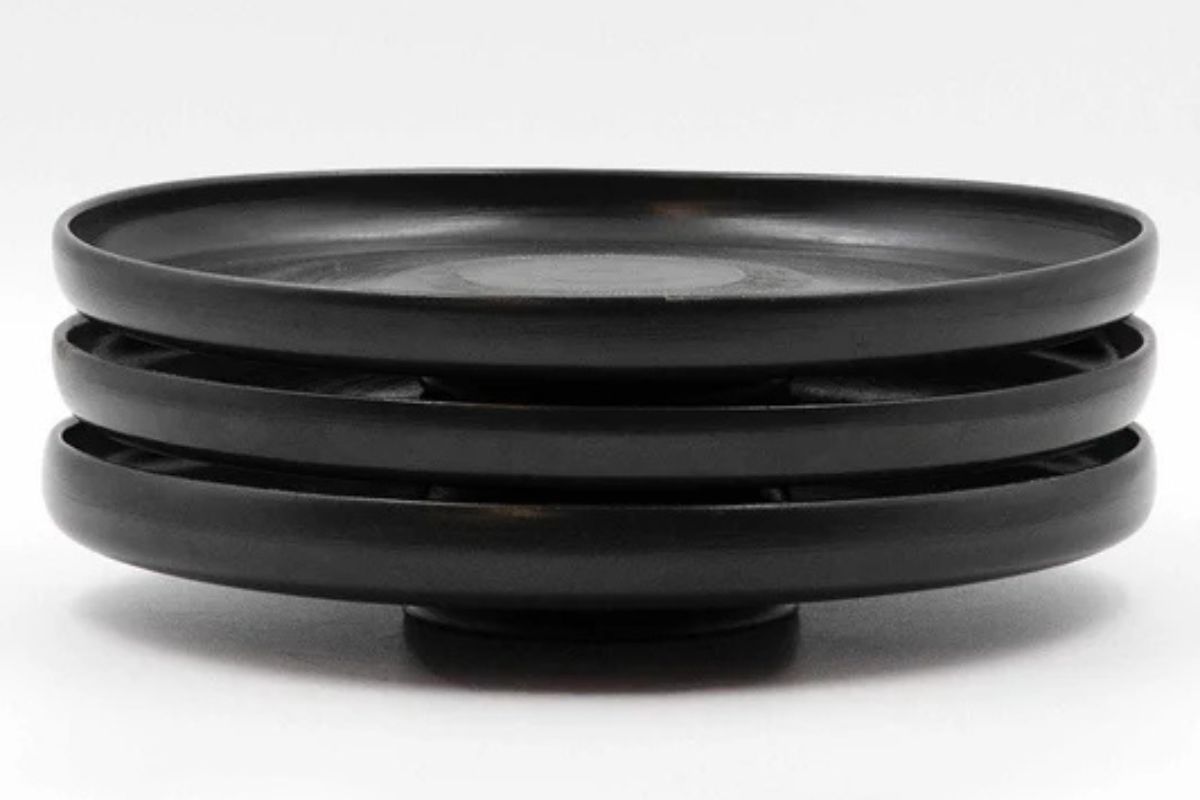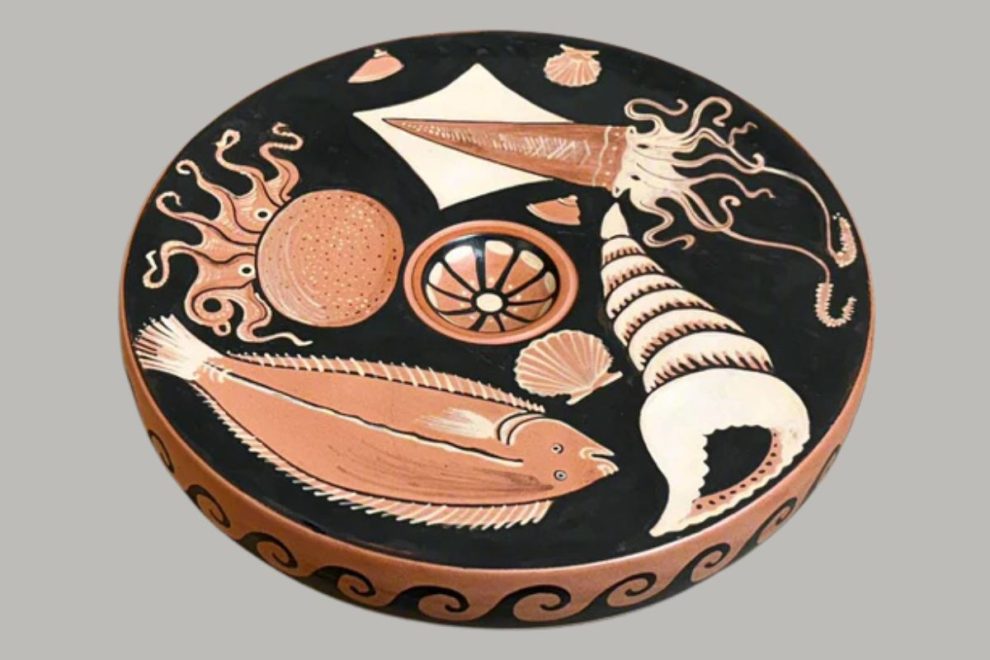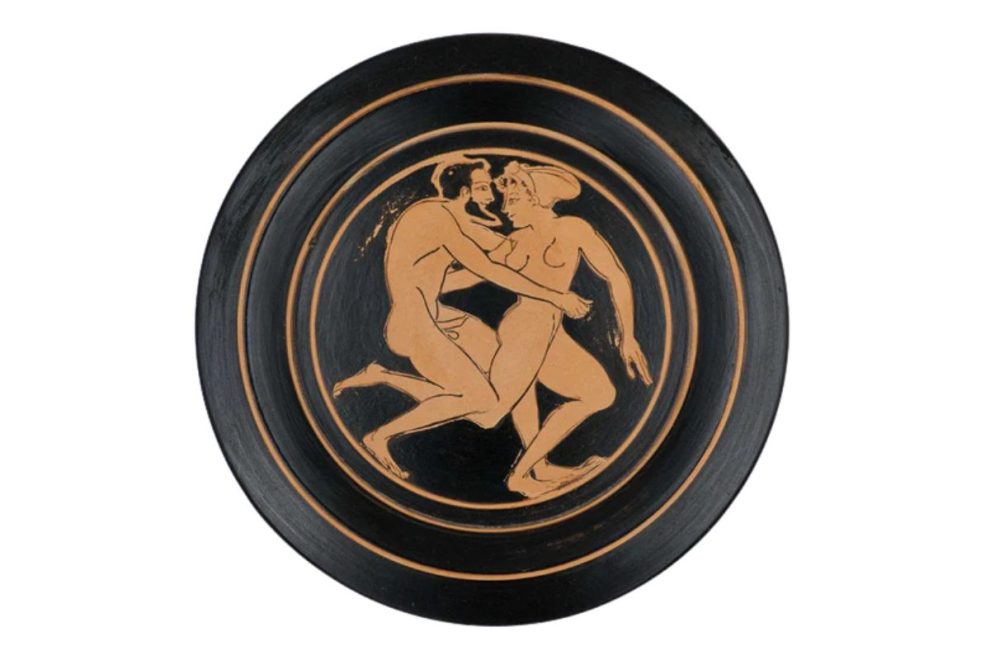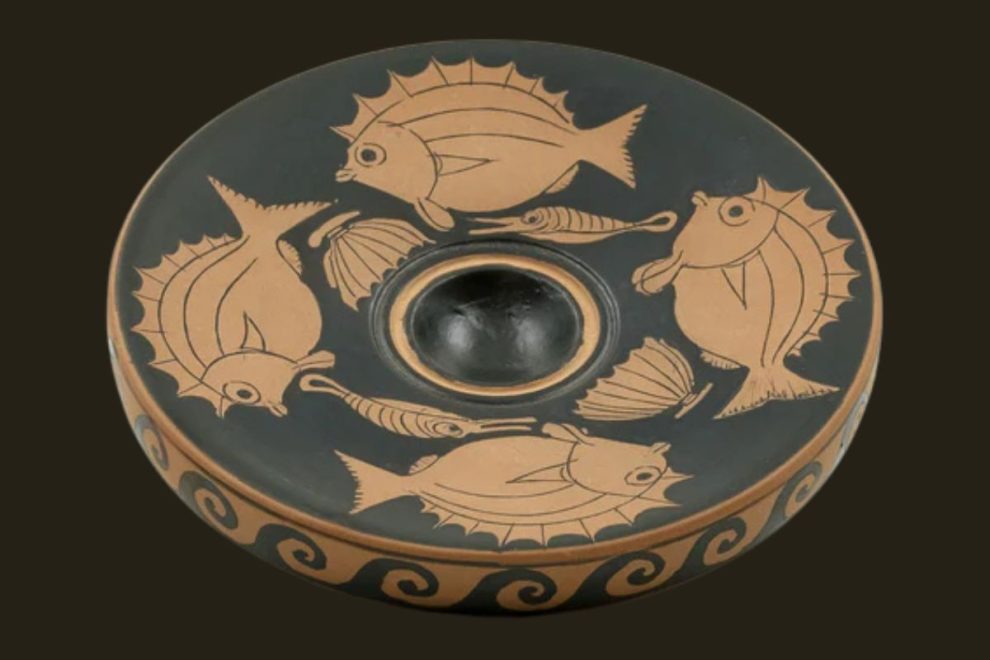
Ancient Greece is an important part of art and culture changes.
Key Highlights
- Ancient Greek plates were amazing artworks, showing detailed designs and bright patterns.
- These plates had both practical and important uses, playing a big part in daily life and rituals.
- The change in design went from the Geometric and Orientalizing periods to the Hellenistic era.
- Different regions showed cultural differences across the Mediterranean.
- Artists tried new materials like terracotta and techniques such as black-figure and red-figure painting.
- Parts of these plates give us important views into ancient Greek society and their art.
It includes key times like the Archaic and Hellenistic periods. One of its many gifts is the ancient Greek plates, which show creativity and skill. These plates were used for everyday tasks and in ceremonies. Their designs display the details of daily life and religious practices. Greek artists from different regions improved their styles over time. They got better and better at painting vases as society changed. Looking at the art of these plates reveals what it meant to be ancient Greek.

The Historical Context of Ancient Greek Plates
Ancient Greek plates were more than just regular items. They reflected a community that appreciated art and fresh ideas. These plates come from the Geometric period, which was around 900–700 B.C.E. They had detailed designs and shared stories. In time, during the Orientalizing and earlier periods, these plates displayed images shaped by nearby cultures, like Egypt and the Near East. As time passed into the Classical and Hellenistic periods, the designs got more detailed. They often displayed stories from myths, human figures, and everyday scenes. Greek plates showed cultural pride and love for religion. Bigger plates were used for special events, while smaller ones were for daily use. As time went on, these plates changed from simple tools into lovely decorations. They provide a view into the art and habits of ancient Greek society.
The Importance of Ancient Greek Plates in Everyday Life and Ceremonies
Ancient Greek plates were important for daily life. They had both useful and valuable purposes. In homes, people used plates for eating and storing food. They often had simple designs or shapes. These plates were not just for meals; they were also used in rituals. They held offerings or food and drink for exclusive occasions. In religious ceremonies, plates showed how much people cared for the gods. Many plates had detailed images that told stories about sacrifices or gods helping their worshippers. These designs helped share beliefs and showed how important faith was. Plates are a kind of ancient Greek pottery. They are like small pieces of art. Artists used these plates to tell stories, share myths, and show spiritual ideas. They were not just useful items. They were also important parts of the culture that help us understand life in ancient Greece.
Regional Variations in Plate Designs
Regional differences had a big impact on how ancient Greek plates were made. This created various styles based on local traditions and outside influences. In Athens, plates often displayed mythological stories and were painted with black-figure or red-figure methods. Corinthian plates showed detailed animal patterns influenced by nearby cultures. In South Italy, different areas made their own styles. They used bright colors and big plates for noteworthy occasions. This blend suited local tastes and traditions while still showing off Greek art skills. The rare artwork in these different plate styles showed how close the Greek states were to nearby communities. As trade increased, they received many ideas that helped their art. This led to many types of designs, from serious important items to happy everyday dishes all around the Mediterranean region.
Materials and Methods Used in Ancient Greek Plates
Ancient Greek plates were mostly made from terracotta. This clay was strong and bendable. Skilled workers picked the best clay for one-of-a-kind items. For regular plates, they used materials from nearby places. The early designs mainly used the black-figure method. Then, they changed to the red-figure style. Artists formed the plates using distinctive tools. Then, they baked them in a furnace to make them strong. Some artists used a white base method for more detailed designs. Together, these materials and ways made the plates not only useful but also beautiful pieces of art that showed the skill of ancient Greek culture.
Types of Clay and Their Sources
The types of clay that the ancient Greeks used for making plates affected their designs. Athens had high-quality Attic clay. This helped the city become a leader in pottery making and exports. Corinthian clay was rougher. It created bright and practical plates with Eastern designs. Local choices affected how clay from nearby areas, such as South Italy, was used. These areas created techniques that focused on being flexible and creative. The Mediterranean had many natural resources. This allowed artisans to experiment with different clays that had various textures and colors. The types of clay used not only made the plates look nice but also showed cultural traits. Each one reflected the geography, society, and art of the city-state where it was created. This gives us a true connection to the ancient Greek way of life.
Techniques of Shaping and Firing Plates
Ancient Greek artisans were very skilled in shaping and firing their work. They made plates by hand or with a wheel to make sure they were even. They painted the plates with an uncommon clay mixture and then fired them in kilns to complete the process. The technique involves wheel-throwing to achieve evenness in form, combined with hand-forming to add detailed elements. The firing process follows a three-stage kiln method, using controlled heat throughout each phase to ensure consistency and durability. Decoration mattered a lot. Black-figure vase painting was popular in the early days. In the Classical period, red-figure techniques became more used. This shift allowed for clearer images with more detail. These methods made Greek plates feel lively while also improving their usefulness and beauty.

Iconography and Symbolism
Iconography was very important in ancient Greek plates. These plates had detailed pictures that represented deeper meanings. Common themes were myths, daily life, and rituals. The colors and designs also had special meanings. For instance, red represented life, while black stood for mystery and seriousness. The plates did more than just serve a purpose. Artists shared social values, religious symbols, and stories on them. This showed how important the plates were to culture. It also created a lasting link between art, history, and tradition.
Common Themes Depicted on Ancient Greek Plates
Ancient Greek plates often tell important cultural stories. They show people in mythical scenes and in daily life. The art features bravery, sports, and ties with the gods. This shows the values and beliefs of Greek society. These vases also have designs from early times. You can see animals and patterns on them. This mix of images helps us understand the social structure and religious practices during old and classical times in ancient Greece.
Symbolic Meanings of Motifs and Colors
Ancient Greek plates were full of symbols and colors that meant a lot. Bright reds and oranges, often in the background, expressed energy and life. Dark colors represented strength and seriousness. Symbols like laurel and olive branches represented peace, victory, and wealth. Animal designs also showed loyalty and strength. Images of gods in these artworks helped people feel close to something greater through important pictures. The colors used together helped share stories. They showed important characters and highlighted actions in the design. Each plate served as a piece of art with deeper meanings based on old Greek values.
Evolution of Plate Designs Through Ages
Over time, plate designs changed a lot. Many cultural shifts and new inventions influenced these changes. During the Orientalizing period, artists started using detailed patterns and human figures. This was very different from the simpler designs of earlier Greek styles. As time went on from the early period into the classical era, artists improved their skills. For example, the white ground method helped them tell stories through art. By the Hellenistic period, the artwork changed even more. Artists mixed different influences and showed the details of Greek art with beautifully crafted vases.
Comparisons Between Archaic and Classical Periods
In ancient Greek art, there were clear changes from the early to the classical periods, especially in pottery and vase painting. Early styles focused on simple shapes and showed people in a flat way. When the classical period began, artists showed a greater understanding of the human body. They paid more attention to details and made more interesting works. This change shows how ancient Greece was growing in knowledge and culture. It also gives us a view into the values and beauty standards of each time, helping us understand history better.
Influences of External Cultures on Greek Plate Art
External factors strongly affected ancient Greek pottery because of trade and cultural exchange. During the Orientalizing period, engaging with Eastern Mediterranean cultures brought new styles and techniques. This led to the use of ideas from Egyptian, Near Eastern, and Etruscan art. Detailed floral designs and myths appeared in Greek vase painting. This blend changed art creation and helped people understand how ancient Greek society linked to the wider history of the world.
Famous Plate Artists and Their Works
Art showed great talent in ancient Greece thanks to the skillful plate artists. The talented Pan Painter and the Eye Artist reveal the careful methods important for Greek vase painting. These artists made their work feel alive using lively human figures and famous designs. They focused on daily life, myths, and sports events. The black-figure and red-figure styles became popular as art changed over time. This blend of old Greek styles and new ideas shaped the story of ancient Greek art.
Exemplars of Craftsmanship in Ancient Greece
The art on ancient Greek plates shows a strong commitment to skill and beauty. These plates have many detailed designs and bright images. They mix usefulness with artistic value. Some plates have geometric patterns, while others show people in daily life. Artists used methods like black-figure and red-figure. This shows they knew their materials very well. These plates were not just for practical use; they also told important stories and shared beliefs from ancient Greek culture. This makes them true examples of great craftsmanship.
Study of Specific Masterpieces
Remarkable art from ancient Greece showcases the best of Greek creativity. One well-known item is the Panathenaic amphora. It displays detailed scenes of sports, showing how important the Panathenaic Games were. The red-figure style seen in attic vases gives clear images of people. This shows the art’s ability to tell stories and the skill of its creators. These forms of art not only capture beauty but also help us understand the social and cultural practices of ancient Greece. They enhance our knowledge of world history.

The Socio-Economic Impact of Plate Making
Making plates in ancient Greece was a key job that changed their economy. The skills of the craftspersons and their techniques helped local businesses grow. It also opened trade routes that linked many places, even getting to central Italy. These trades increased the wealth of city-states and created cultural connections. As pottery evolved, funeral practices showed a better understanding of Greek society. Plate designs often served as markers for graves. They also reflected the values and status of the people who had died.
Plate Making as a Profession in Ancient Greece
Craftsmanship in ancient Greece became a skilled job. Workers focused on different types of making things. Potters and painters mattered a lot in the culture. They created both useful items and beautiful art pieces that showed what the people thought was important. Making ancient Greek pottery often needed teamwork. This work had unique designs and shapes that shared stories about myths and daily life. Being good at this job helped artisans earn respect. It also helped the economy of their towns and built the history of Greek art.
Trade and Export of Greek Plates
The trade and sale of Greek plates were very important in ancient times. These lovely pieces, often found in grave markers and homes, helped share cultures between different areas, particularly during the Orientalizing period. Big trade routes connected mainland Greece to Central Italy and other regions. This link spread Greek art and ways of creating pottery far and wide. The popularity of figure vases and styles like the white background method increased demand. Because of this, ancient Greek pottery became a significant item in the Mediterranean market.
Conservation and Restoration Efforts
Efforts to save ancient Greek pottery have changed. Today, they use both old methods and new techniques. These methods focus on careful handling. This care helps the delicate pottery last over time. New strategies look at archaeological records. This helps experts repair broken pieces while keeping their history safe. Important places like the British Museum and the Museum of Art play key roles in protecting these items. They display the skilled work and rich stories in each piece of ancient Greek pottery. This shows great respect for the thinking of the ancient Greeks.
Modern Techniques in Preserving Ancient Artifacts
New ways have been created to help keep old artifacts safe. They combine new tools with the knowledge of history experts. Techniques like 3D scanning and digital drawing support us in recording and studying ancient Greek plates carefully. This keeps their stories alive. Also, by using safe places and better materials, we can prevent damage and protect the rich stories in these pieces. Using these modern methods helps us care for ancient Greek art. It also aids us in learning more about the cultural meaning of each item.
Prominent Museums and Their Roles in Conservation
Important museums help look after ancient Greek art. They keep and study key items. Well-known places like the British Museum and the Museum of Art have big collections of old Greek plates. This helps researchers learn more about the interesting stories behind these works. Their care for these items uses new ways. This helps important pieces, like panathenaic amphorae and figure vases, last for a long time. By showing public exhibitions and teaming up with scholars, these museums help everyone understand ancient Greek society and its art better.
Final Reflections
Ancient Greek plates are not just old items. They tell important stories about the art and society of ancient Greece. As these plates changed through the years, they show how culture influenced their design and purpose. By studying these objects, we learn a lot about daily life, ceremonies, and beauty standards of that time. These details help us know people better. They show how the ancient Greeks used pottery to express themselves and what mattered to them.
